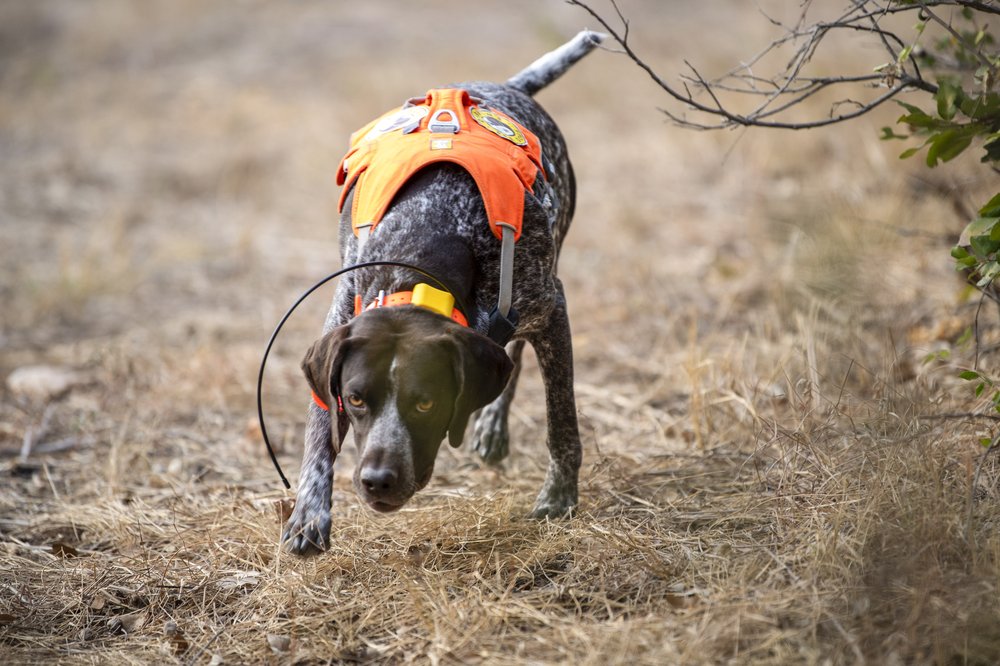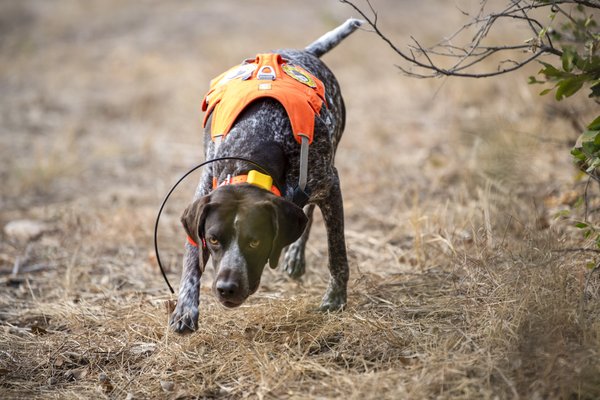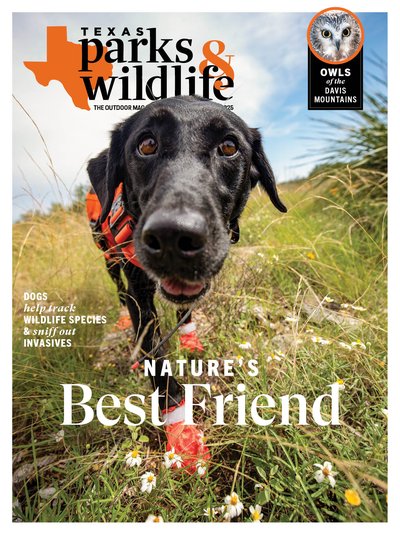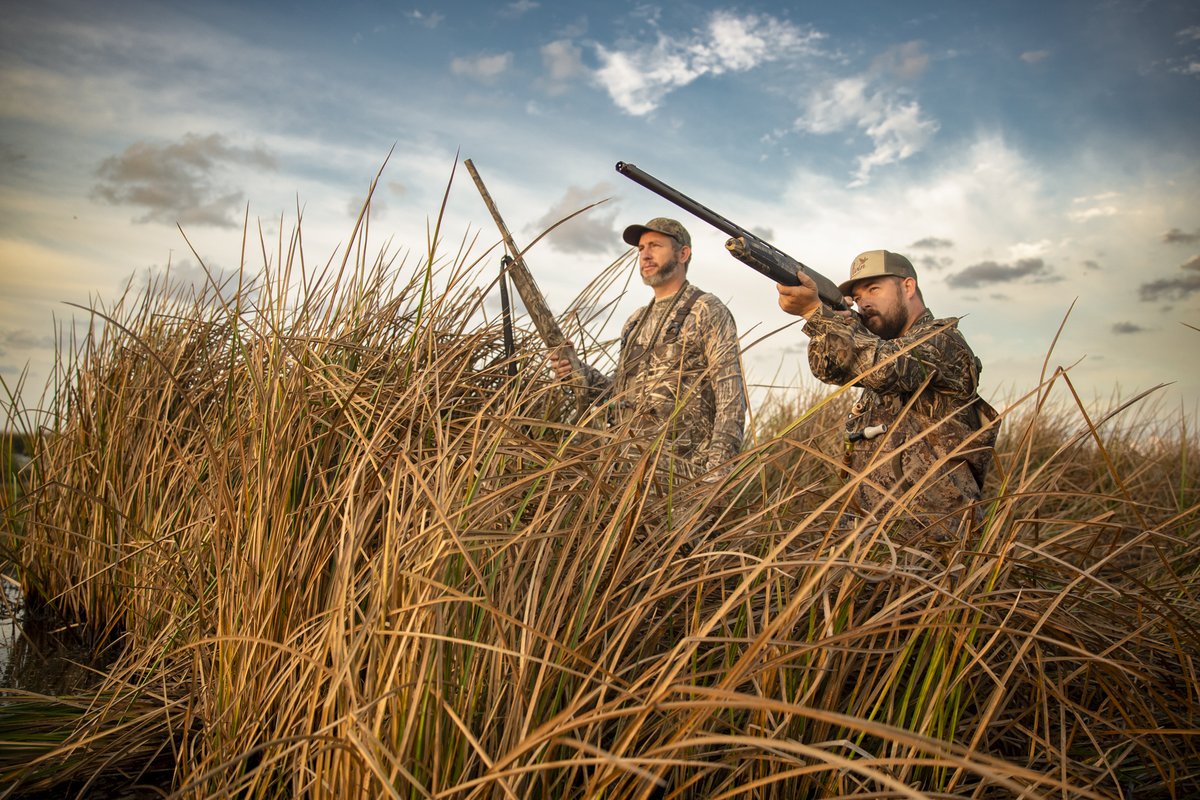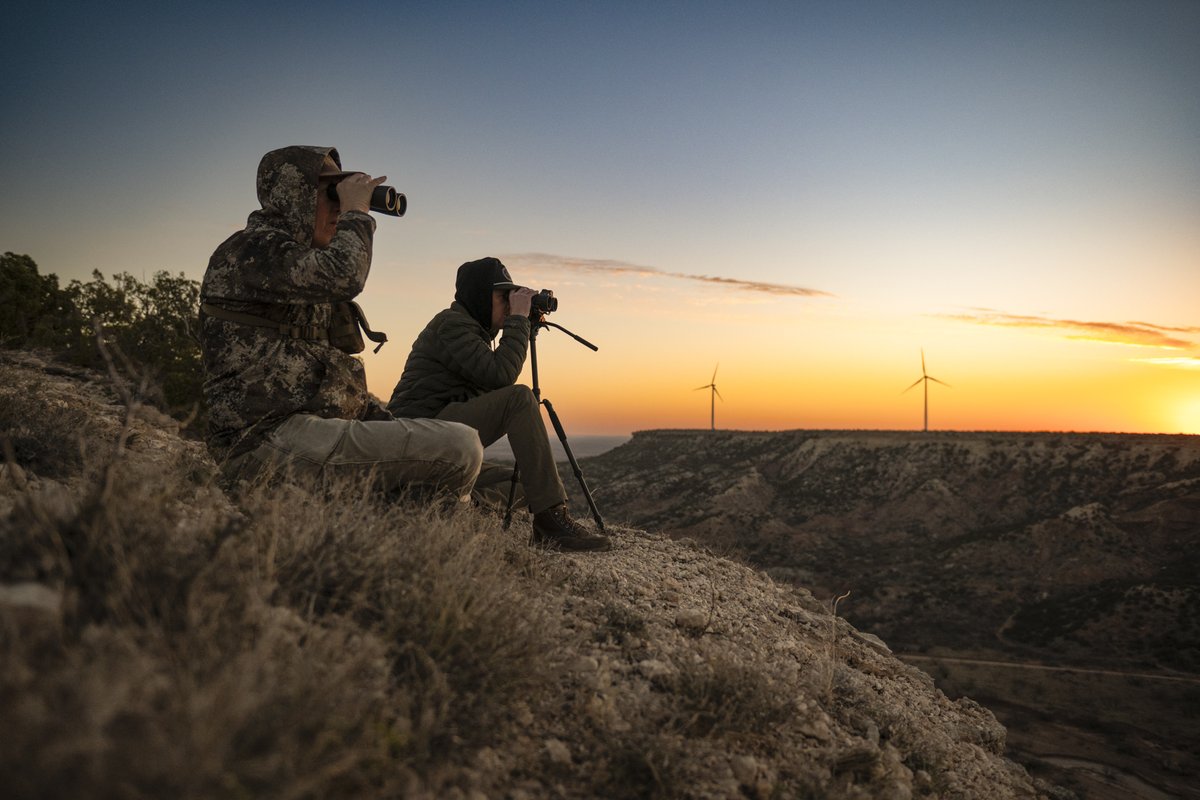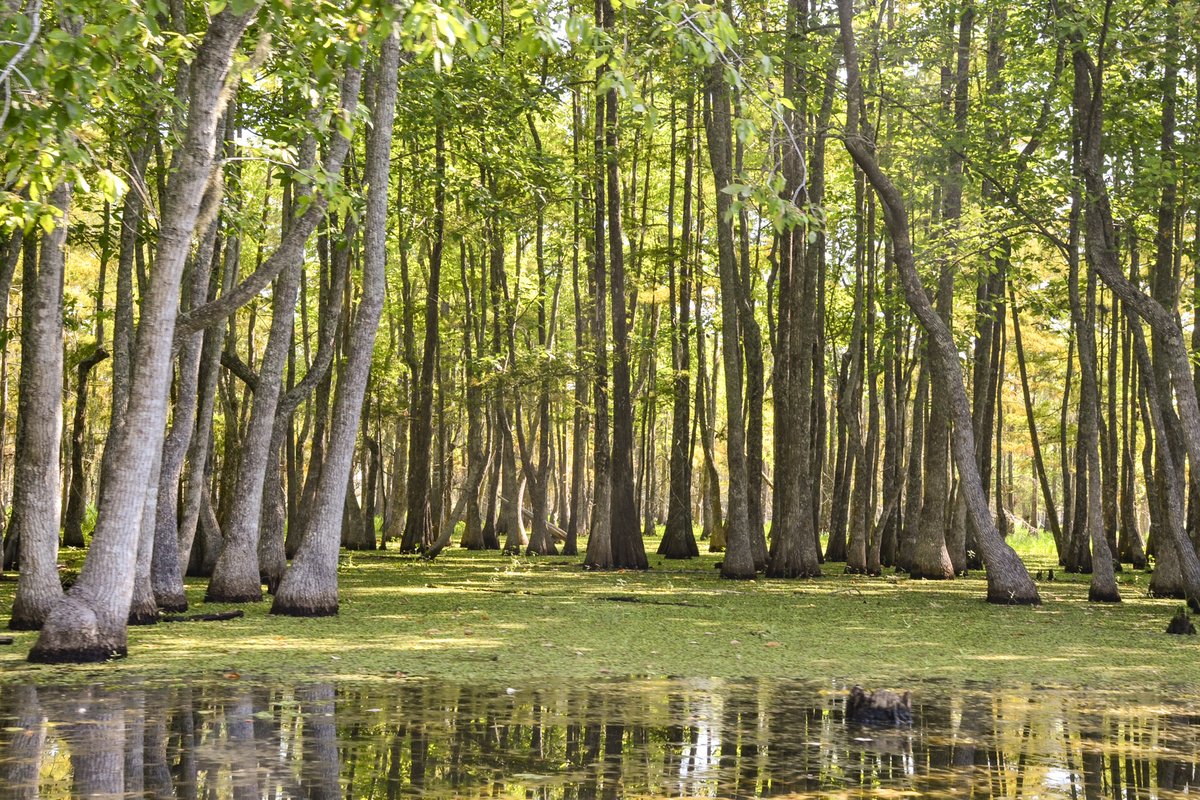IN A GRASSY section of restored prairie at the Lady Bird Johnson Wildflower Center in Austin, an enthusiastic German shorthaired pointer named Gerty Cori is hard at work. She’s running in long, curving lines across the field, nose to the ground, her feet protected from cacti and thorns by black rubber booties.
Ahead of her, her owner and handler, Jacqueline Staab, is helping Gerty (named after the first woman to win a Nobel Prize in physiology and medicine) navigate the space. Today, the pair are searching for nests of the American bumblebee, a species in decline. Unlike European honeybees, which may remain in the same hive for decades, native bumblebees establish colonies annually under long grass, fallen logs, or underground, so finding their nests can be difficult and time-consuming.
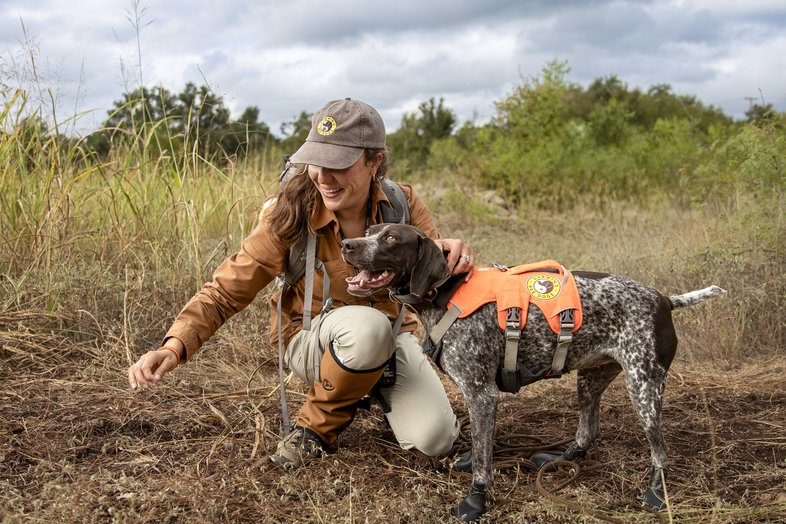
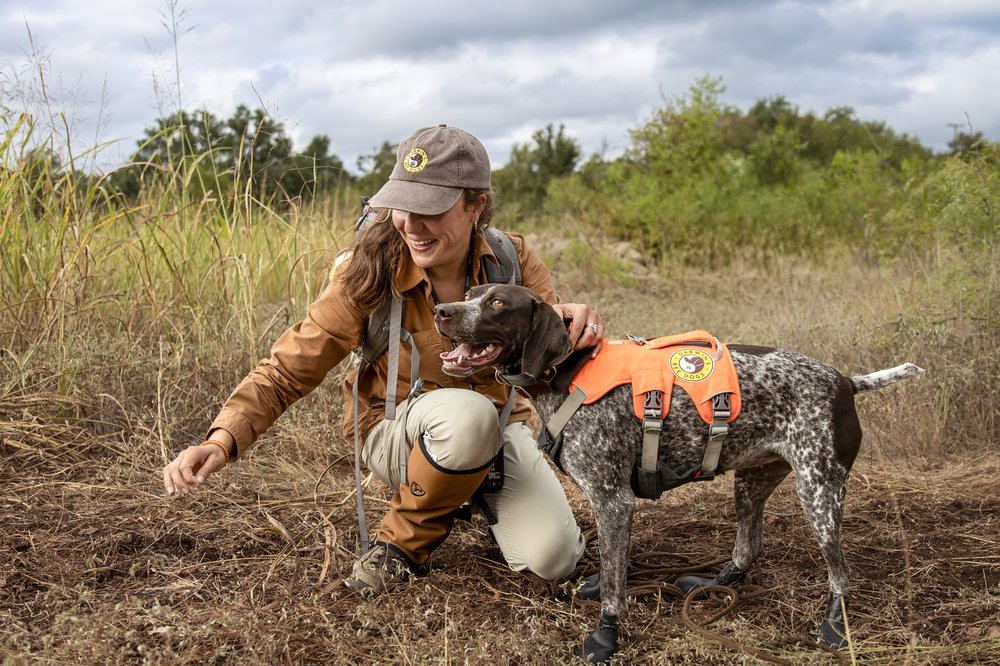
Jacqueline Staab and Gerty take a break from sniffing for bumblebee nests at the Lady Bird Johnson Wildflower Center.
Maegan Lanham
Jacqueline Staab and Gerty take a break from sniffing for bumblebee nests at the Lady Bird Johnson Wildflower Center.
Maegan Lanham
When Staab was in college, she spent a summer looking for bumblebee nests in Alpine, Colorado. “I spent five days a week on the ground crawling around on my hands and knees,” she says. “When you find a hole that might have a nest in it, you have to sit there and stare at it for 30 minutes and see if there’s any nest traffic. And if there’s not any bees, it’s like, ‘Oh, I guess that’s not a bee hole,’ and you keep moving. I found three my first year.”
Now, thanks to Gerty, Staab has been able to find three in a single day.
Staab owns Darwin’s Bee Dogs, a company based in North Carolina that specializes in finding pollinators. She’s part of a growing community of researchers training dogs for conservation and cultural resource projects, from finding threatened or endangered animals to detecting wildlife diseases to uncovering archeological sites.
“It’s really in the last two, two-and-a-half decades that conservation dogs have really started to explode,” says Paul Bunker, who runs San Antonio–based conservation canine business Chiron K9. “I think it’s fair to say in the canine detection world, conservation is the fastest-growing field. It’s gaining more interest as more scientists understand what canines can do, and how they can be integrated into projects.”
In Texas and beyond, dogs and humans are working together to protect the natural and cultural resources of our state.
The Buzz About Bee Dogs
Gerty and Staab's foray at the Wildflower Center is part of the new Texas Parks and Wildlife Foundation Pollinators & Prairies program. They funded Jacqueline’s work with Gerty in the hopes to learn more about American bumblebee nesting habitat (and possibly detect a rarer native bee, the variable cuckoo bumblebee, which uses the same nests).
Bumblebees are beneficial pollinators, feeding on nectar from wildflowers, crops and gardens. But since the start of the 21st century, their population has dropped by around 90 percent. With funding from H-E-B and Phillips 66, the Texas Parks and Wildlife Foundation hopes to fill data gaps in our knowledge of this species, so we can better conserve them.
“Bumblebee nesting is really understudied and underfunded, which is a huge problem,” says Staab. “For instance, even though bumblebees are supporting many native plants we’ve got, there have only been about 60 studies done worldwide to date about their nesting and habitat.”
Gerty is well protected from any bee stings, and Staab makes sure to check in to make sure Gerty is healthy and safe throughout the process.
“Every 30 minutes she gets a break to pull cacti out, check her paw pads, and then after every day, she gets a massage,”
says Staab.
Gerty keeps the bees safe as well. “She’s actually trained to point about three or four feet away from the nest, so that she doesn't interfere with it,” says Staab.
Staab enjoys working with Gerty to aid bumblebee conservation. “I really love people and I really love dogs and I really love the environment, and this is just my dream to be out here helping all of those three things,” she says. “We’re going to keep doing it and save as many bees as we can.”
Cadaver Dogs: Archeology Edition
For centuries, dogs have been used to find human remains. In the 1970s, the United States began officially certifying human remains detection dogs. First responders use these dogs to help find victims of natural disasters, and dogs have been key members of search and rescue operations and crime scene analysis teams.
But just how old of a cadaver can a dog detect? The answer, it turns out, is very old.
Michael “Ben” Alexander, a K9 training coordinator and visiting professor at Texas State University’s Forensic Anthropology Center, trains canines to work less like police dogs and more like four-legged archeologists.
These dogs can locate remains that are thousands of years old and buried deep in the earth (a human body leaves traces in the soil long after it has completely decomposed). “There are over 900 chemicals that are put off by the body as it decomposes,” says Alexander.
Alexander is the director of FIRST Detection K9, a nonprofit volunteer organization that trains and provides dogs for human remains detection both recent and historical, as well as other conservation initiatives (they trained one dog to find endangered Houston toads).
He starts training his dogs at Texas State University’s body farm, where forensic anthropology researchers use donated corpses to study the effect of environmental conditions on decomposition. Once the dogs are trained to these more recent corpses, “we’re able to basically calibrate their nose down to a very small, finite amount of odor that’s coming out for the historic and pre-contact graves,” he says.
Alexander doesn’t have a specific breed he prefers to work with. “The dog that’s best suited to it is the dog that’s got the attitude to do it,” he says. “What we talk about is drive — the dog generally has an overwhelming desire for some outside stimuli. So either they’re a food nut or they've got a favorite toy that when you pull that toy out, the rest of the world just fades away, and that’s what they’re focused on.”
Since he began training dogs for historical human remains detection, Alexander has worked with the Texas Department of Transportation to identify archeological sites ahead of construction projects. At the first dig site he went to, he and the dog he brought with him identified several grave sites that researchers hadn’t even suspected.
These dogs could be a valuable alternative to traditional costly and invasive archeological practices, such as surveying a site by digging many deep trenches and unearthing human remains. “That’s a huge thing, especially for native tribes,” says Alexander.
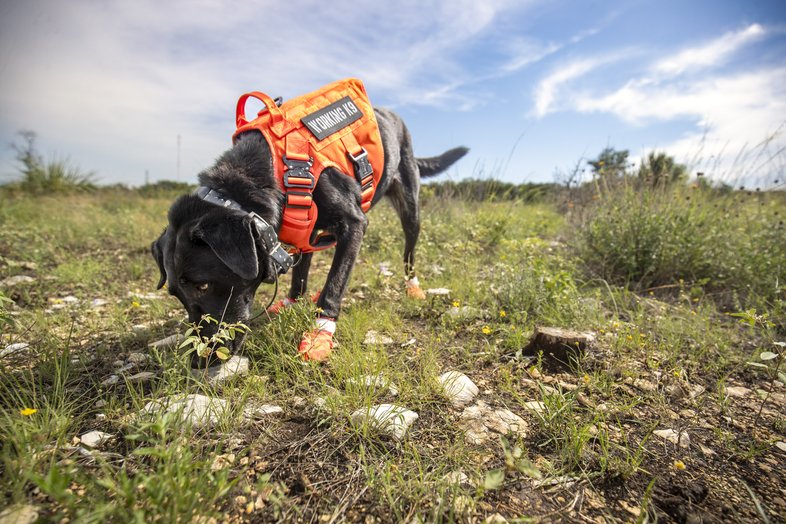
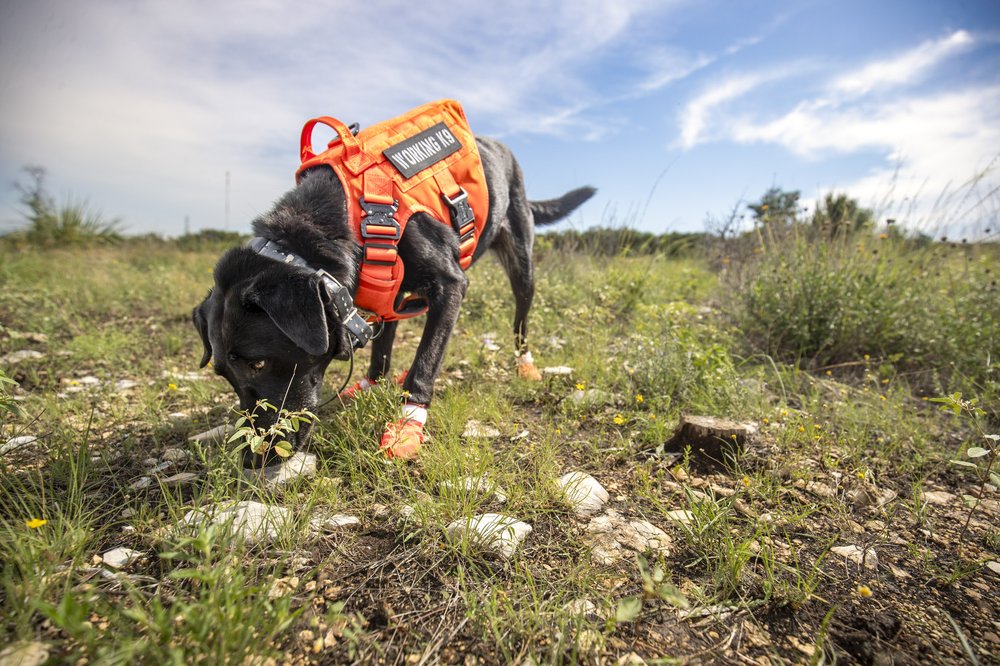
Dogs like Nika, shown here, aid in horned lizard restoration by sniffing out lizard scat.
Maegan Lanham
Dogs like Nika, shown here, aid in horned lizard restoration by sniffing out lizard scat.
Maegan Lanham
Horned Lizard Detectors
Texans love horned lizards. The spiky reptiles (colloquially called horny toads) were once common across the state, but their population has plummeted in past decades because of factors such as habitat fragmentation and fire ants, which push out the horned lizards’ favorite food, harvester ants.
To restore populations of the beloved lizards, the San Antonio Zoo runs a horned lizard reintroduction program. Conservationists release captive-born lizards in various habitats where they’ll have a chance to thrive in the wild. When it comes time to check on the lizards and see how well they’re doing, the zoo turns to dogs
Paul Bunker of Chiron K9 works with volunteers to train dogs to scent horned lizard scat. “If possible, sometimes we’ll actually look for horned lizards,” says Bunker.
By collecting data on how much scat and how many lizards the dogs can find in a habitat, the team can determine whether the newly introduced population is thriving. “Last time we went out there, actually, we found two adult size lizards just walking around,” he says. “They’d burrowed a little bit, and we could just see them on the surface.”
Finding the lizards is an encouraging sign that the reintroduction project
is working.
Bunker got his start as a dog trainer in the British army, and started Chiron K9 in 2018. “For me personally, it offered a challenge in dog training,” he says. “I needed a challenge to expand my horizons in the canine community. I've been doing explosive detection and typical law enforcement type work for many years. And I’ve always had a love of conservation and the environment.”
Through his business, Bunker has trained dogs for projects around the world. He’s taken dogs to Laos to search for the endangered saola, and to the Virgin Islands to seek out the rock iguana. He’s proud to do his work in Texas. “Not only does conservation exist in Texas, but it's a hub for different projects throughout the world,” he says
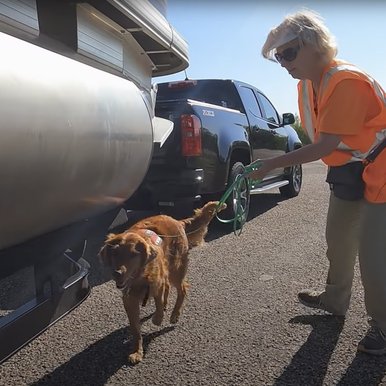
A dog sniffs a boat for zebra mussels.
Texas Parks and Wildlife TV Show
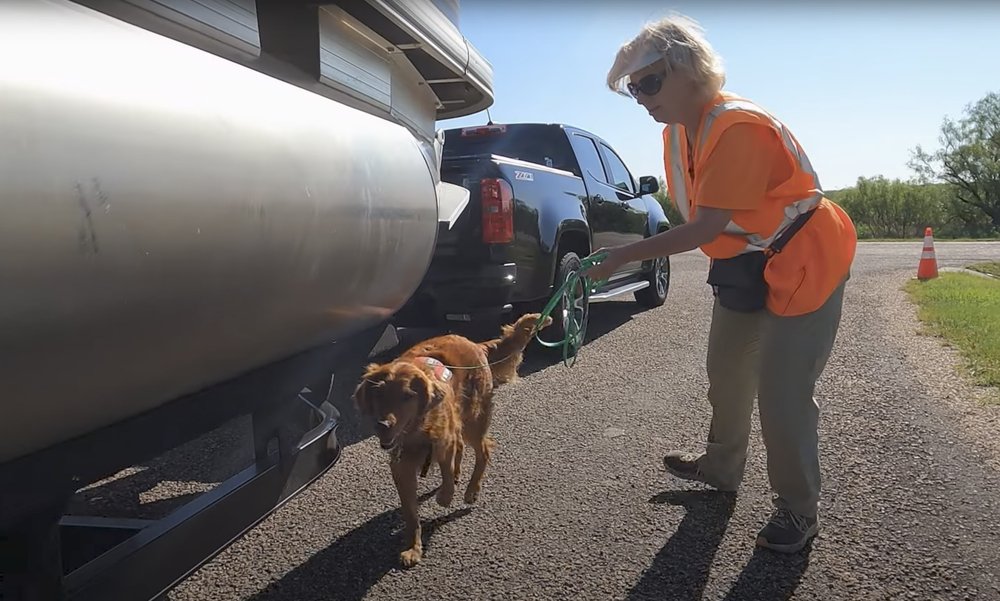
A dog sniffs a boat for zebra mussels.
Texas Parks and Wildlife TV Show
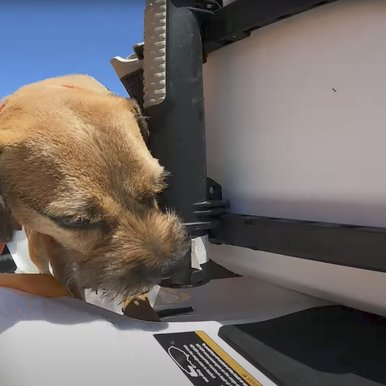
Detecting zebra mussels on boats can stop their spread to other water bodies.
Texas Parks and Wildlife TV Show
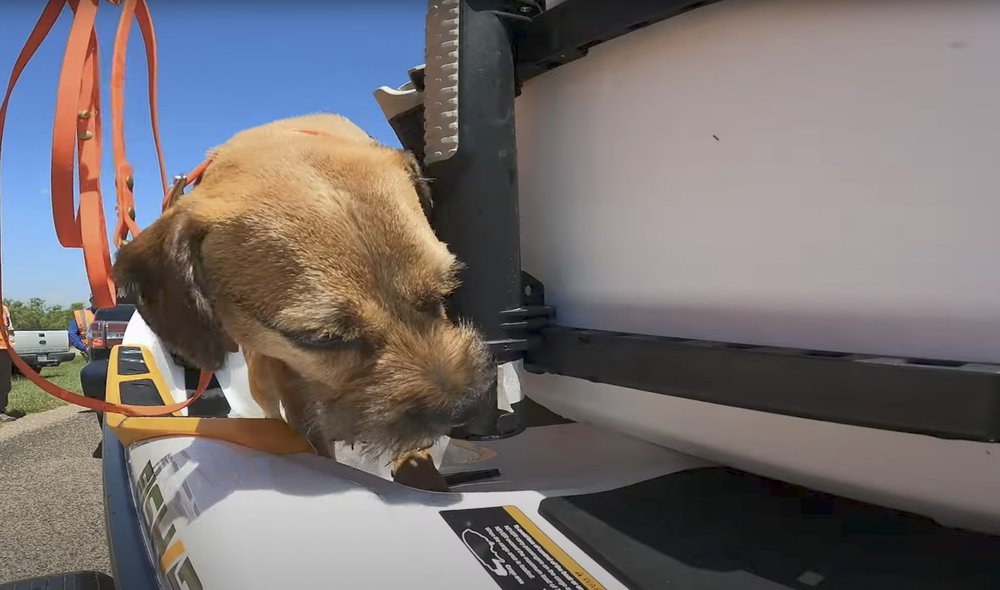
Detecting zebra mussels on boats can stop their spread to other water bodies.
Texas Parks and Wildlife TV Show
Show 'Em Your Mussels
Zebra mussels are tiny, invasive mussels that arrived in Texas in 2009. When the mussels arrive in a lake, they significantly alter the ecosystem, outcompeting native species and filtering out food resources like plankton, and can cause significant damage to water control and supply infrastructure. Their larvae, called veligers, are microscopic, and can easily hitchhike in residual water, being moved from lake to lake by boaters who have not adequately cleaned, drained and dried their boats.
“Zebra mussels are hard to detect when they are [present in low numbers],” says Matt Barnes, an associate professor of aquatic ecology at Texas Tech University with a special interest in invasive species. Being able to prevent zebra mussel infestations could help protect the native species in our lakes. “We’re dealing with a mussel that is maybe the size of your thumbnail, or we’re dealing with microscopic veligers, little reproductive larvae that can actually swim around and are free floating,” says Barnes. “Those are really hard things to locate. And that's where scent detection canines have been really useful.”
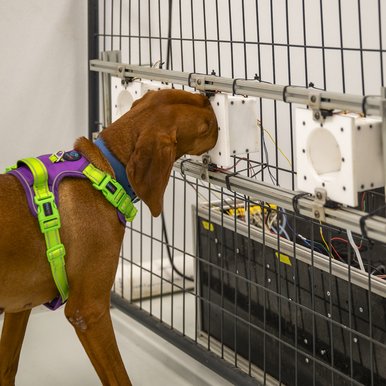
Nathan Hall trains K9s using special scent boxes.
Maegan Lanham
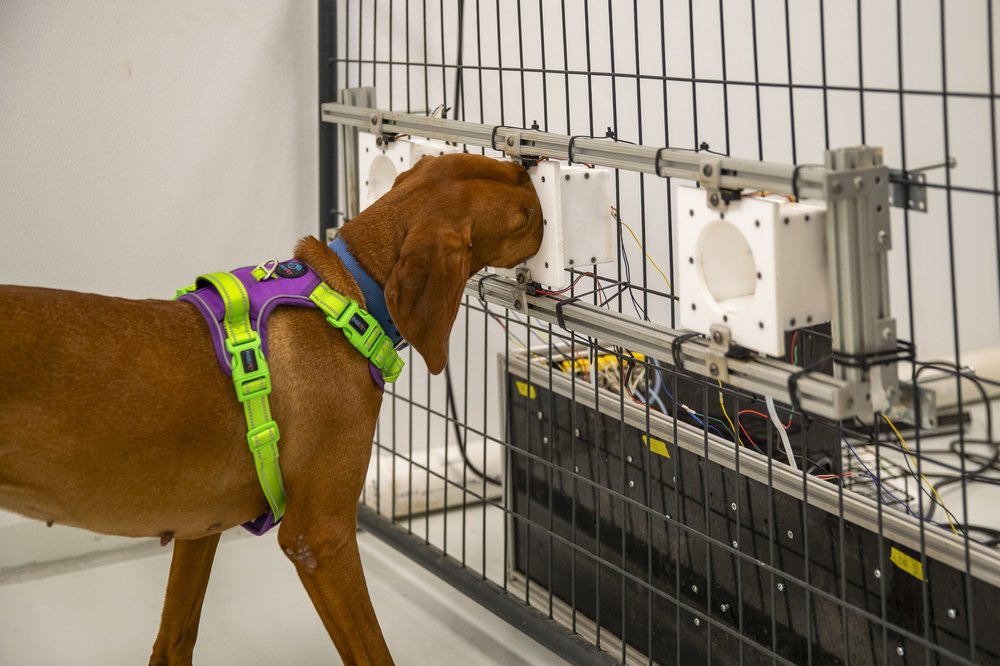
Nathan Hall trains K9s using special scent boxes.
Maegan Lanham
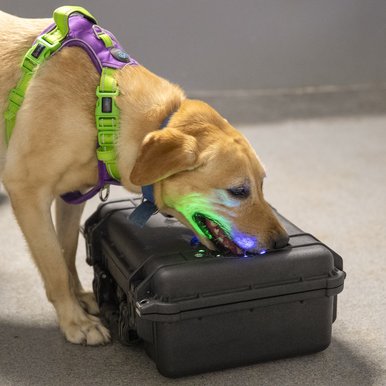
Dogs at Hall's Texas Tech lab learn the scents of invasive species.
Maegan Lanham
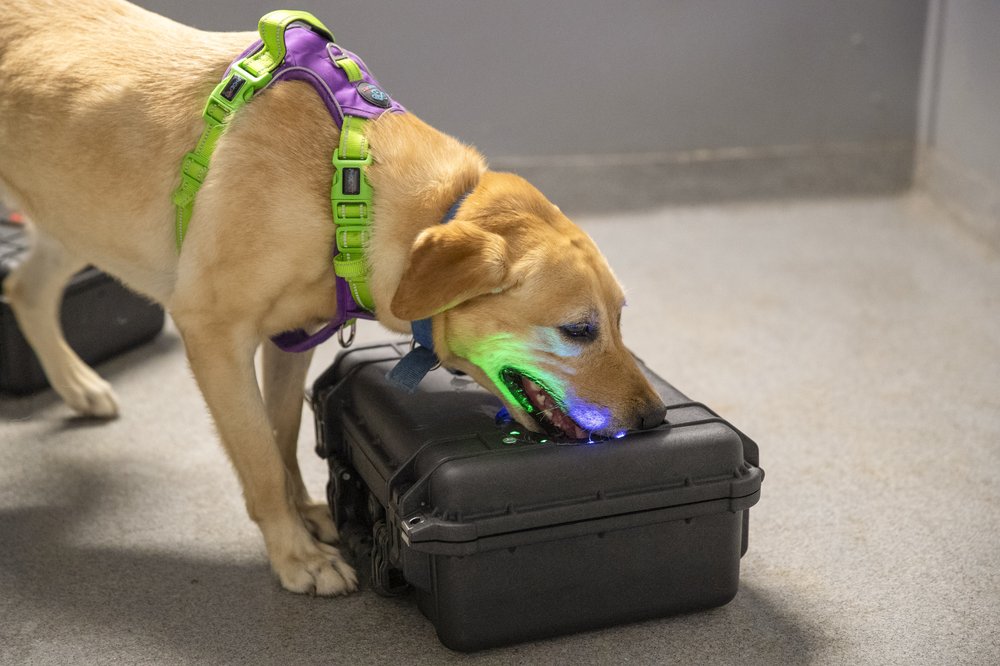
Dogs at Hall's Texas Tech lab learn the scents of invasive species.
Maegan Lanham
Barnes has been working with Nathan Hall, an associate professor of companion animal science who runs the Canine Olfaction Research and Education Lab at Texas Tech University, to advance the science of using dogs to detect this invasive species.
Their work has involved use of detection dogs to inspect boats before launch, or after they come off the water, as part of a project funded by the U.S. Fish and Wildlife Service with approval and feedback from Texas Parks and Wildlife Department.
Barnes and Hall use he dogs in conjunction with another technology that’s growing in popularity: environmental DNA, or eDNA. This method tests water for microscopic traces of the mussels. It’s more accurate than dogs, but takes longer, and while it can detect the presence of mussels it cannot discern whether they are live.
“A PCR test [for eDNA] is 100 percent definitive, extremely sensitive, but you get results back in 48 to 72 hours after it goes to a lab for processing,” says Hall. “Whereas our dog sniff time for them to clear a sample is about 250 milliseconds, and then it takes about three to four seconds to get a result.”
Hall and Barnes recommend using the two technologies in combination — the dogs can help cast a wide net and determine which boats require further testing. “They’ve proven really effective,” says Barnes.
Some researchers have wondered in the past whether a technology such as eDNA will one day come to replace dogs in this type of work. But Hall has a different perspective. “I think we’ve finally gotten to a point in which we’ve recognized that the evolution of olfaction is so old and so important and so remarkable that it’s going to be how technology and olfaction enhance each other to make a better system, rather than which one is going to be the tool,” he says.
